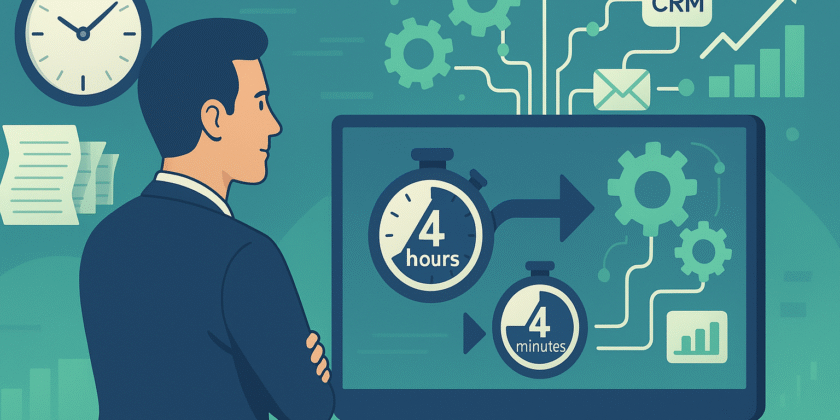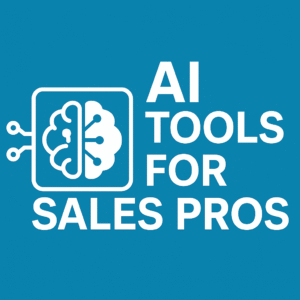A sales manager recently told me something that stuck: “We went from twenty hours per week of manual work to two hours. Our lead response time dropped from four hours to four minutes.” That dramatic transformation wasn’t magic—it was automation.
The reality is that sales teams today have more automation tools available than ever before. But with options like Zapier, Make.com, n8n, and Pipedream, the real challenge isn’t whether you should automate—it’s choosing the right platform for your team. Each one comes with strengths, limitations, and unique philosophies. Get that choice wrong, and you’ll waste time, money, and buy-in. Get it right, and you’ll see efficiency gains that completely reshape your sales process.
Why Platform Choice Matters
Many sales teams stumble when they underestimate the cost of a mismatched platform. Some platforms are too simple to scale beyond basic automations. Others are too complex, leaving non-technical teams overwhelmed and projects abandoned. Switching platforms midstream is not only disruptive—it’s expensive and time-consuming. Integration limitations, hidden in the fine print, often surface only after a team has invested weeks in setup.
The right platform, however, unlocks real productivity gains. I’ve seen companies scale from five to fifty automations without hiring additional staff. I’ve seen sales teams reduce errors through automated data transfers, and I’ve seen response times improve from hours to mere minutes. Those results come from aligning platform capabilities with team comfort and long-term strategy.
Breaking Down the Four Platforms
Zapier is often the starting point. It’s user-friendly, highly intuitive, and backed by the largest integration library in the market. For sales teams with little to no technical experience, it’s a great way to achieve quick wins—connecting CRMs, email platforms, and lead management tools in minutes. The trade-off, of course, is cost at scale and limited customization for advanced workflows.
Make.com represents the next step up. It’s a visual workflow builder designed for teams that need more sophisticated automations but still want a no-code interface. It handles complex branching logic, advanced data transformations, and high-volume workflows at a fraction of Zapier’s cost. But it comes with a steeper learning curve and requires more planning.
n8n is the open-source powerhouse. Unlike Zapier or Make.com, there are no artificial limits on workflow complexity or execution. It can be self-hosted, giving technical teams total control over security, customization, and cost. It’s ideal for organizations with developers or strong technical resources. The downside? It requires real expertise, both to implement and to maintain.
Finally, there’s Pipedream, which includes String. It blends accessibility with developer power, offering real-time event processing, API flexibility, and built-in coding support for JavaScript and Python. It’s the platform of choice for teams that want advanced, responsive automations but are comfortable getting hands-on with APIs and code when needed.
Matching Platforms to Your Team
The key to success is not asking which platform is “best,” but which is “best for us.” If your team is non-technical and just needs quick, reliable automations, Zapier is the natural fit. If you want advanced workflows without hiring developers, Make.com is the right middle ground. If you have developers or strong technical resources, n8n gives you unlimited control at a fraction of the long-term cost. And if your workflows demand real-time responsiveness and advanced API integrations, Pipedream is worth serious consideration.
Think carefully about your team’s technical comfort, the complexity of your use cases, your budget for scale, and your integration requirements. These factors should guide your decision far more than flashy features or marketing claims.
Taking the First Step
The best way to move forward is to experiment. Sign up for free accounts on two platforms and run the same simple workflow in each. For example, capture a new lead from your website, push it into your CRM, and trigger an automated welcome email. Watch how each platform handles it. Document the process, note the pain points, and gather feedback from your team.
Once you’ve seen the difference firsthand, you’ll know where to invest. Start small, prove the value quickly, and then scale. Over time, your automation strategy can evolve into a foundational pillar of your sales operations.
You can learn more by listening to my podcast episode for AI Tools for Sales Pros. Check out the episode here:
Join the B2B Sales Lab
If this episode leaves you curious—or perhaps a bit overwhelmed—remember that you don’t have to navigate these decisions alone. Inside the B2B Sales Lab, you’ll find sales professionals who are actively testing these platforms, sharing workflows, and troubleshooting challenges. It’s a private, member-led community where sales pros exchange real-world experience, not theory.
Designed and led by veteran sales leaders, the Lab is where strategy meets execution. Whether you’re evaluating platforms, designing your first automation, or scaling to dozens of workflows, you’ll find actionable insights and peers who’ve been there before.
👉 You can join today with a free 90-day membership at b2b-sales-lab.com.










You must be logged in to post a comment.